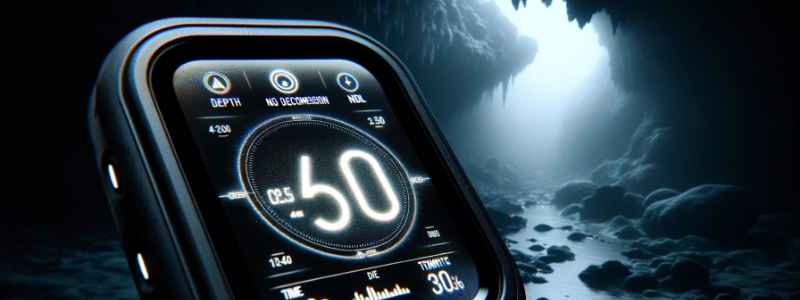Navigating Depths Safely – Dive Computers and the Value of Backups

Dive Computers and the Value of Backups
In the world of scuba diving, particularly in the technical realm, the importance of reliable dive timing and depth measurement devices cannot be overstated. These devices, ranging from full-featured dive computers to basic bottom timers, are critical for managing dives safely. While dive computers offer a wealth of data and automated decompression calculations, some divers opt for bottom timers, relying on their skills to calculate decompression on the fly. Regardless of the choice between a high-tech computer or a straightforward bottom timer, precision and reliability remain paramount. However, as with all technology, neither dive computers nor bottom timers are infallible. This realization ushers in the vital conversation about backup devices – a subject rife with diverse opinions, brand allegiances, and, regrettably, a fair amount of biases.
The Case for Backups
Technical diving pushes the limits beyond recreational scuba diving, involving deeper dives, longer bottom times, and the use of mixed gases. The increased complexity and inherent risks underscore the need for redundancy in safety equipment. A backup dive computer becomes not just a recommendation but a necessity. Should the primary computer fail, the backup ensures continuity of dive data, crucial for managing decompression stops and preventing accidents.
Same Brand vs. Different Brands
When it comes to selecting backup dive computers, divers are presented with a significant choice: opt for the same brand and model as their primary or explore options from a different brand. Each path offers its own set of benefits and factors to consider.
Same Brand/Product: One major advantage of using the same brand and model for both the primary and backup dive computers is the consistency in the user interface and data presentation, which can greatly streamline the diving experience by reducing cognitive load. Familiarity with the operation minimizes confusion under pressure. Moreover, if these devices could sync settings, such as decompression models and alarms, it would enhance the fail-safe aspect of using a backup; ensuring both computers provide matching critical information during the dive. This synchronization would be a game-changer, adding an extra layer of safety and convenience. Additionally, the use of identical algorithms for decompression calculations ensures uniformity in dive planning and execution.
Different Brands: Conversely, choosing different brands for the primary and backup dive computers offers the advantage of feature and algorithm diversity, potentially providing a broader safety net against brand-specific flaws or recalls. This approach allows divers to leverage the strengths of different models and gain a more comprehensive understanding of their diving profiles through varied data points and perspectives.
Navigating Biases and Making Informed Decisions
It's crucial to acknowledge that the dive community, like any other, has its biases. Many articles and reviews may not stem from a broad enough experience with multiple brands or could be subtly influenced by sponsorship and brand loyalty. This doesn't invalidate these resources but calls for a critical approach when consulting them. Divers should seek out diverse opinions, focus on technical specifications and safety features relevant to their diving practices, and consider the practical aspects of using the devices underwater.
Conclusion
Ultimately, the decision on whether to use the same brand or different brands for backup dive computers rests with every individual diver. It depends on their comfort level, diving needs, and personal preferences. Divers are encouraged to conduct thorough research, consider their specific diving activities, and perhaps most importantly, test different computers in real dive conditions when possible.
Remember, while technology can greatly enhance diving safety, it is not a substitute for proper training, experience, and personal responsibility. The primary goal is to ensure a safe and enjoyable dive, with backup systems serving as a vital component of that safety net.
See you underwater ⌚️👋